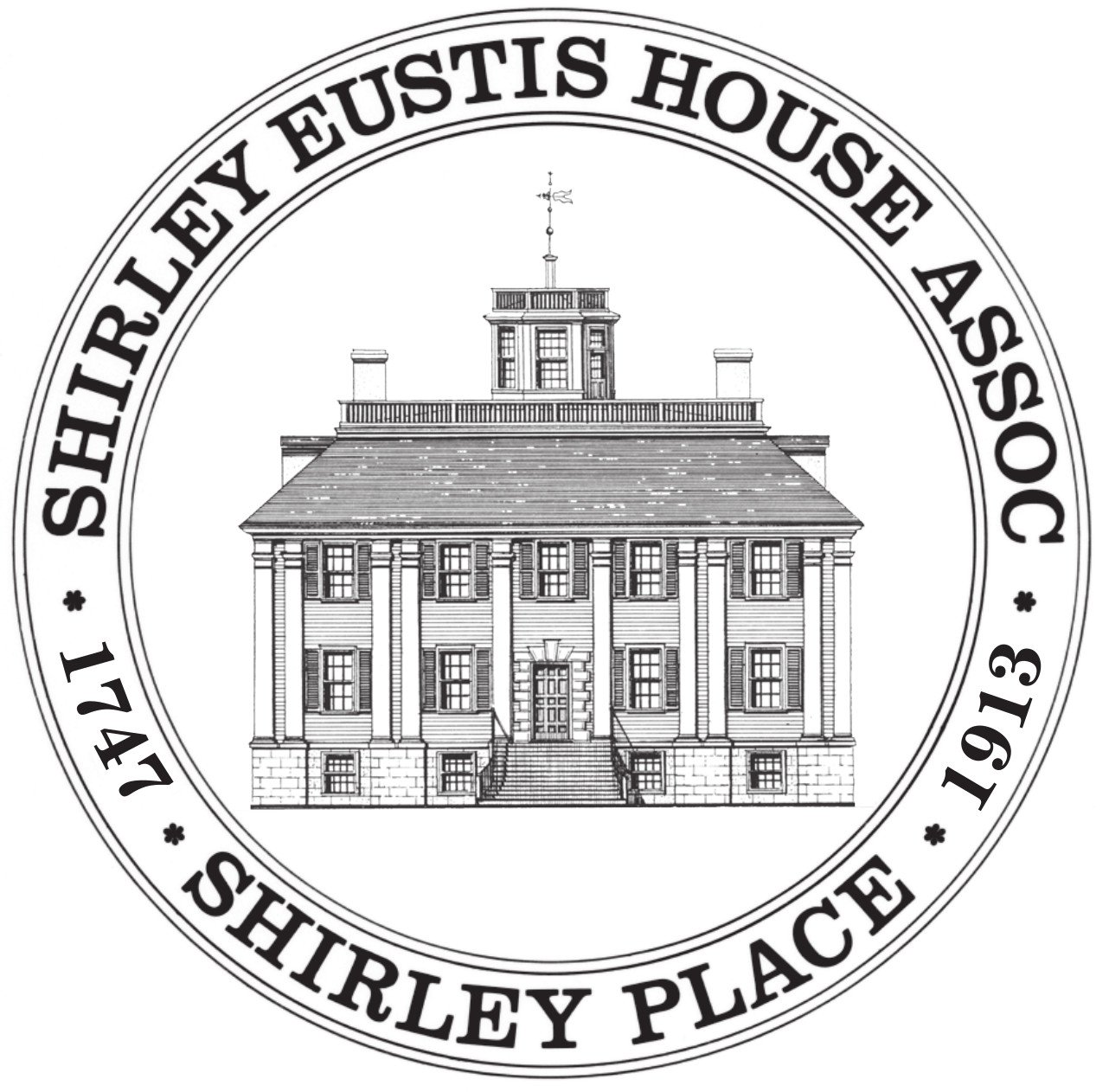
exhibit media
Hover your mouse over each image to see the captions.
Images from “The British Empire”
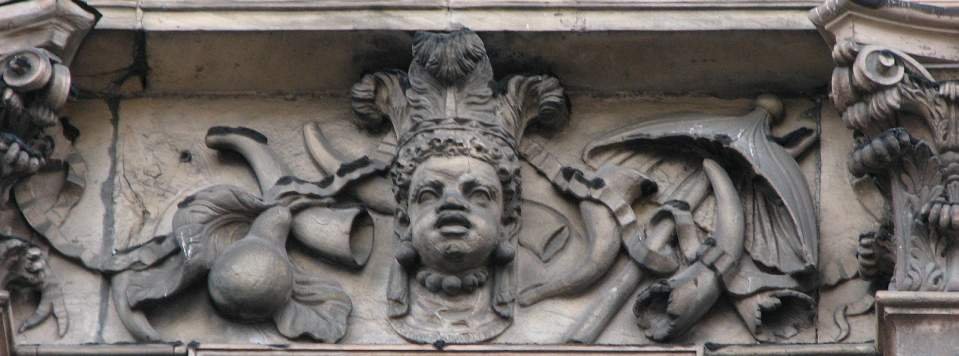
The frieze at the top of Liverpool’s town hall building in Liverpool, UK. The city earned much of its wealth as a port in the British slave trade, which can be seen in small ornate details such as this one. The African person shown here is surrounded by depictions of wealth, symbolizing the success enslavement brought to Liverpool. Image via ____.
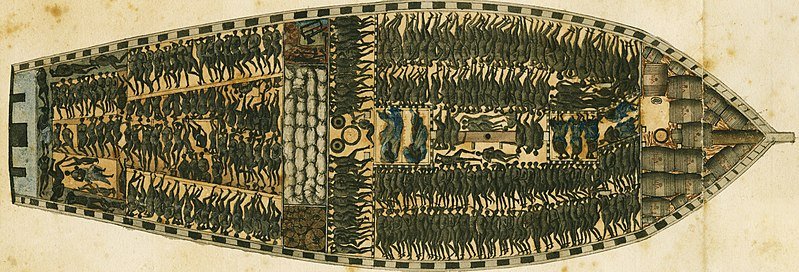
“Slave Deck of the Ship the Séraphique Marie of Nantes…” 1770. René Lhermitte, France. Rotated detail.

“Franciscus Monteio Lucatanae provinciae praeficictur,” Unknown artist, 1595. Detail.
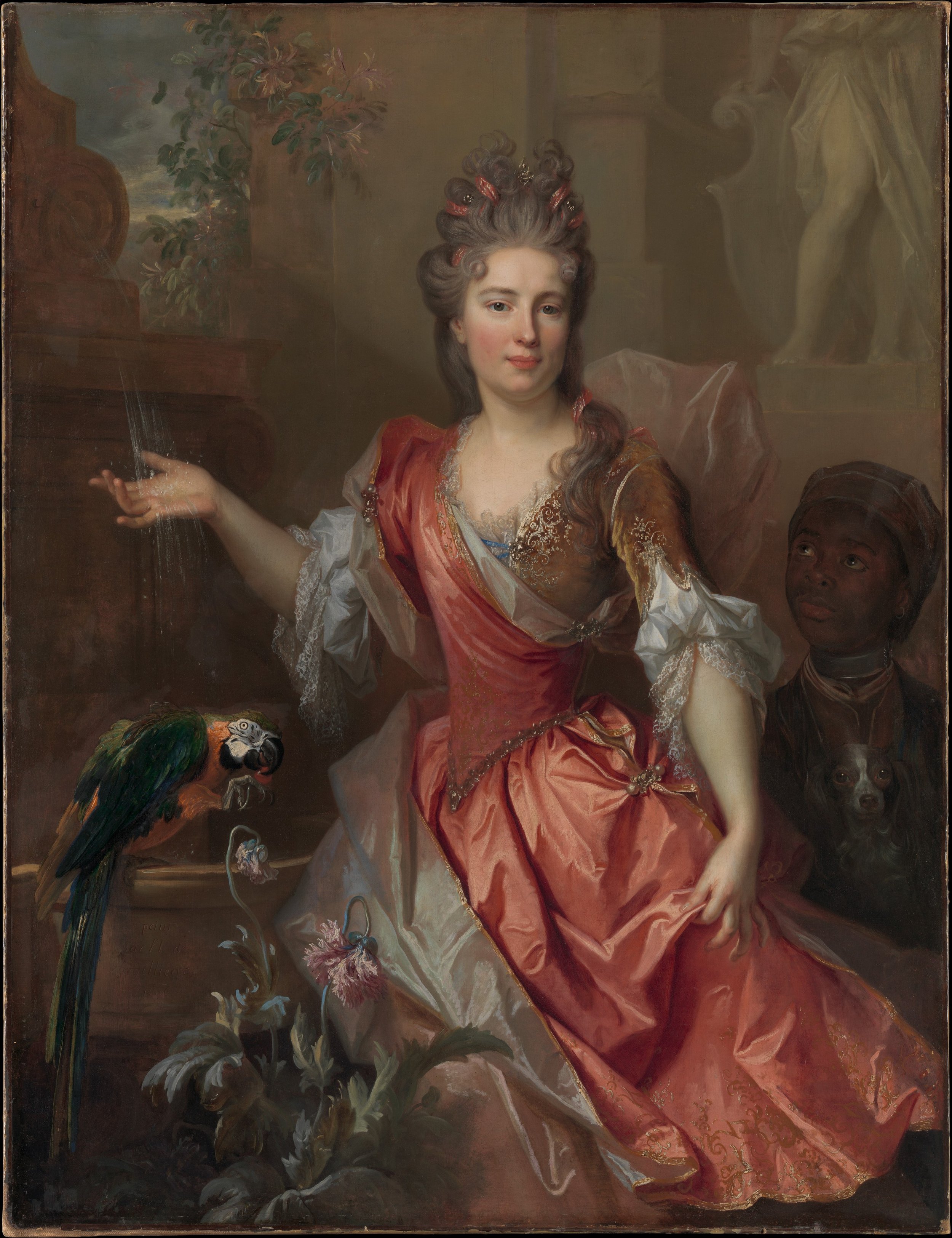
Portrait of a Woman and an Enslaved Servant, Nicolas de Largilliere, 1696. France. Image courtesy The Metropolitan Museum of Art.
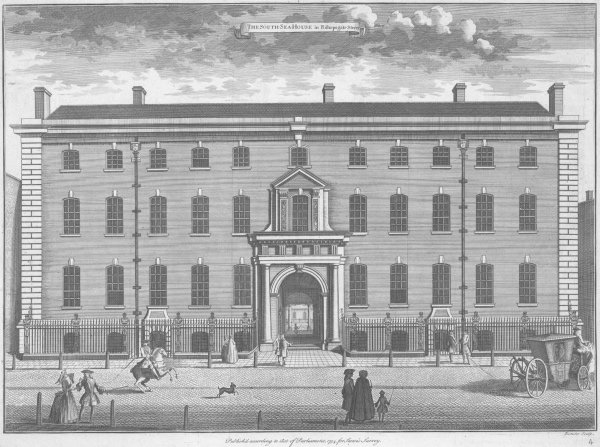
The London headquarters of the South Sea Company, a joint-stock trade organization that was given exclusive rights to trade Africans with the Spanish and Portuguese in 1711. When the business collapsed in 1720, the aftermath led to an economic crisis in Britain.

“Olaudah Equiano (Gustavus Vassa),” Daniel Orne, 1 March 1789. This engraving was the frontispiece for Equiano’s autobiography, titled The Interesting Narrative of the Life of Olaudah Equiano.
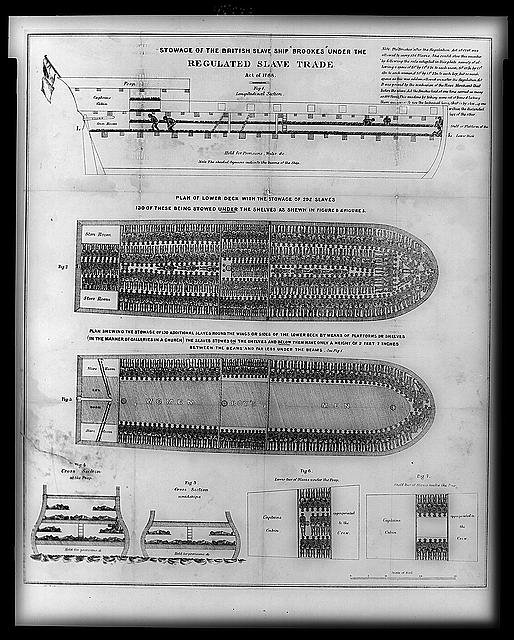
Stowage of the British slave vessel “Brookes,” which was loaded with enslaved people under the “Regulated Slave Trade Act” of 1788. This act limited the number of enslaved people allowed as cargo on a single ship based on the ship’s size and berth. It was the first British law passed to regulate the slave trade.
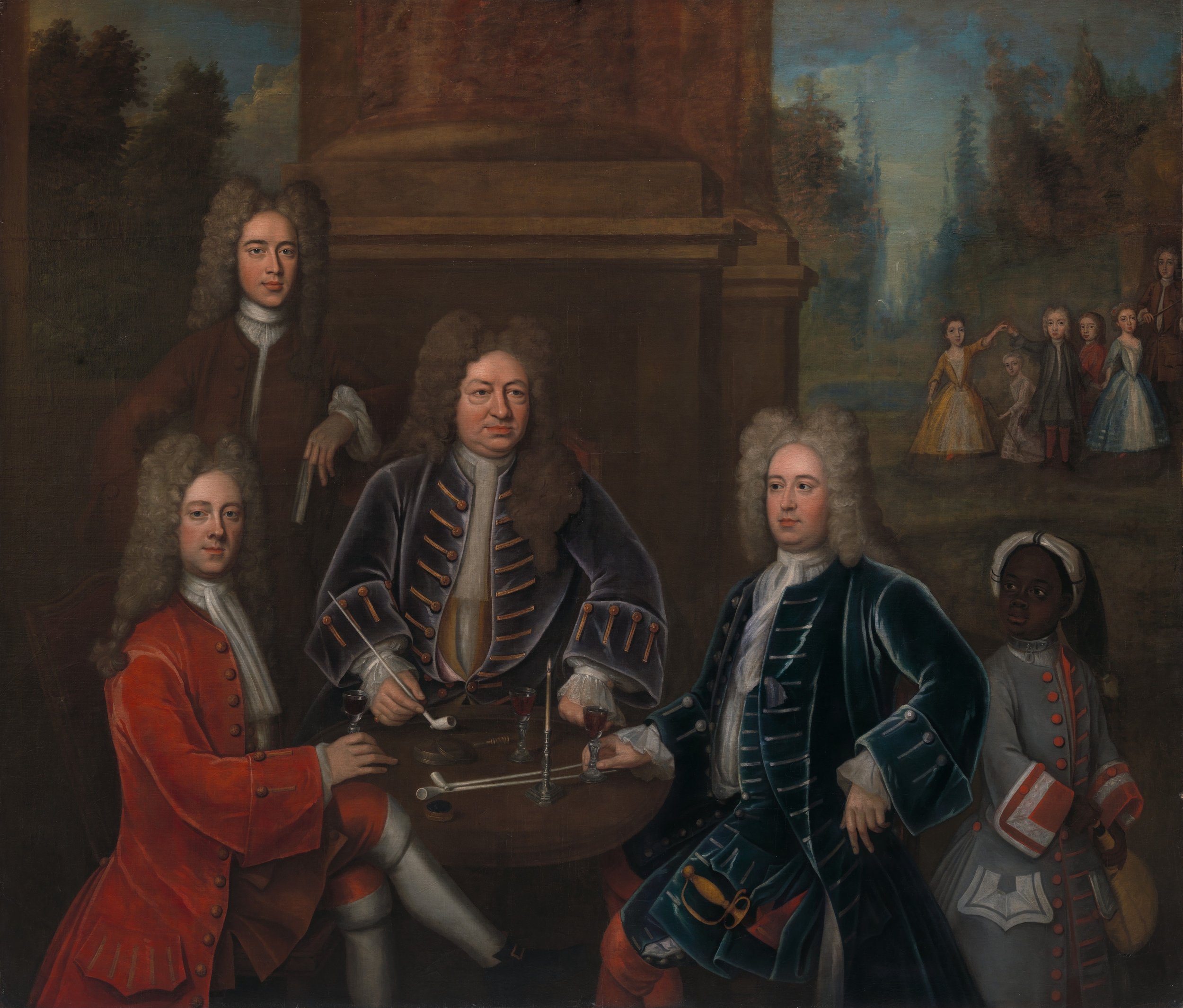
“Elihu Yale with Members of His Family and an Enslaved Child,” ca. 1719, attributed to John Verelst. Image courtesy the Yale Center for British Art.

Wagon jack circa the eighteenth or nineteenth centuries. Would have been used by an enslaved person or servant to support a wagon or carriage while a wheel was being replaced - a very arduous process.
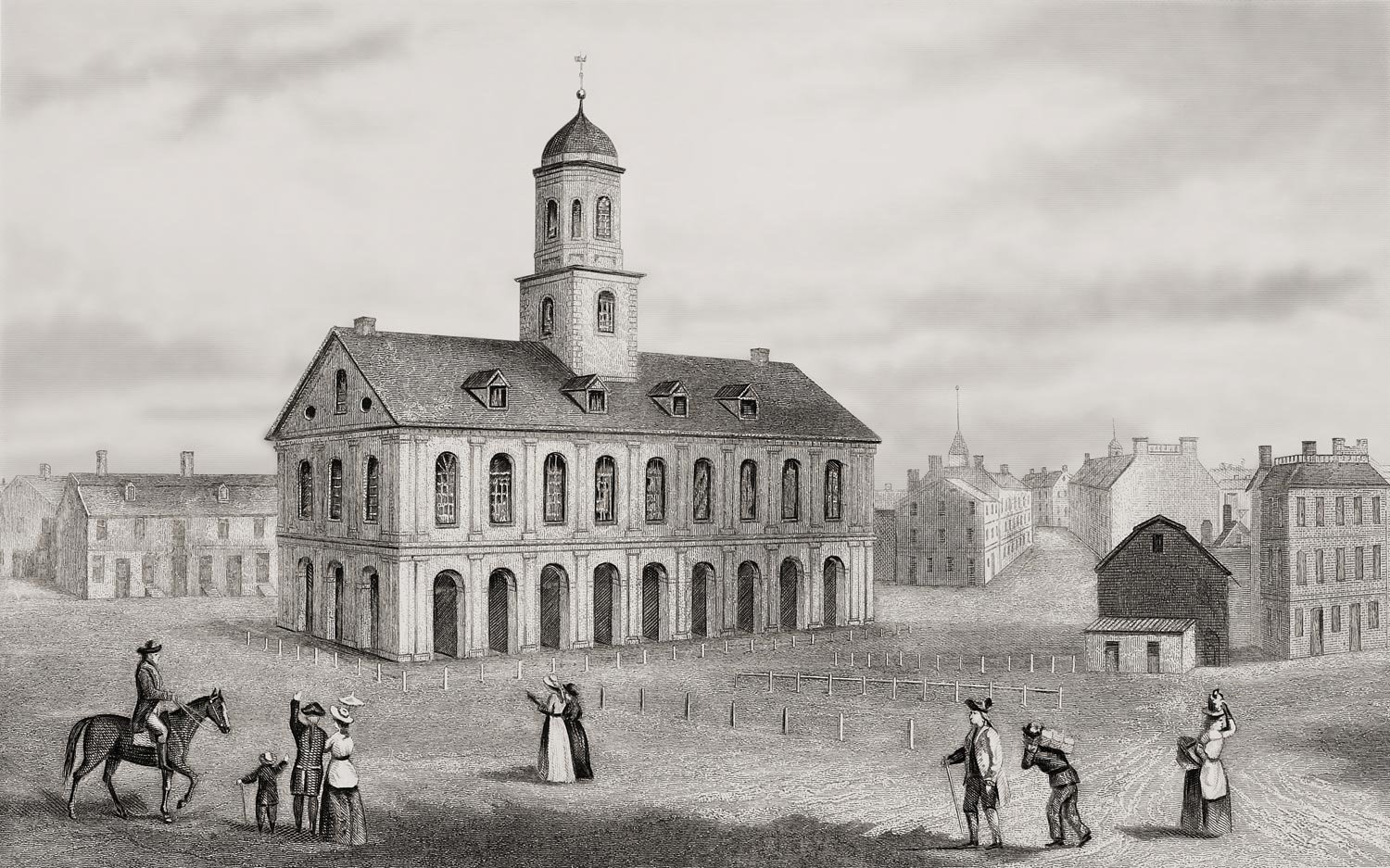
“View of Faneuil Hall in Boston, Massachusetts,” March 1789. Samuel Hill, engraver. Image courtesy the Library of Congress.
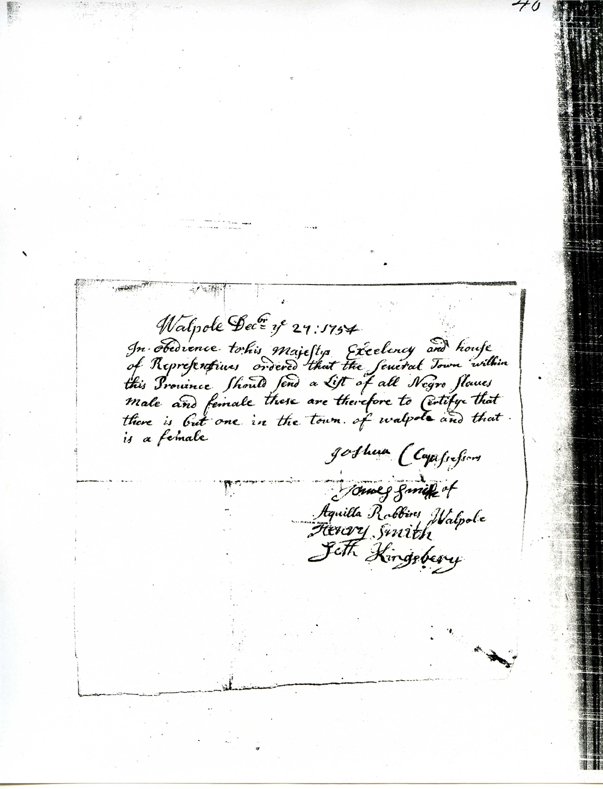
1754 Slave Census count from Walpole, MA. Image courtesy PrimaryResearch.org.
Images from “Slavery in New England”
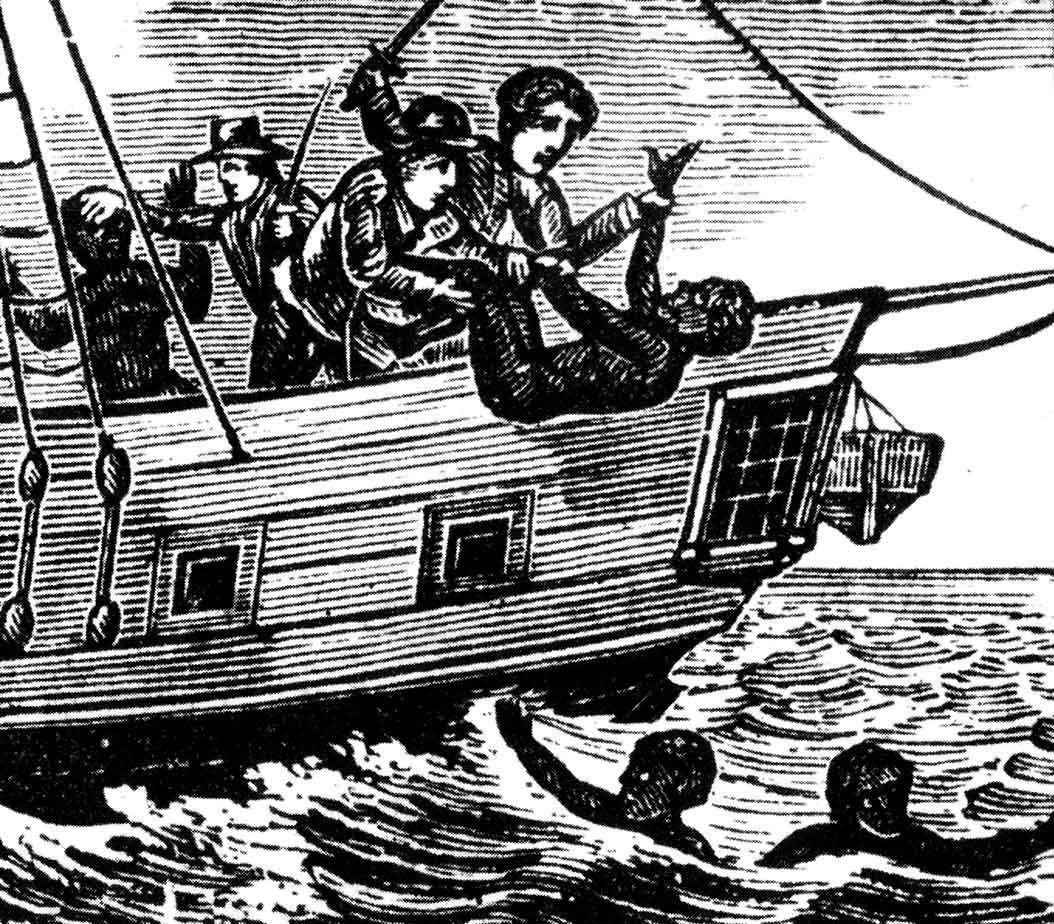
Woodcut image published in the antislavery newspaper The Liberator, edited by William Lloyd Garrison. This image depicted slave traffickers throwing sick enslaved people overboard prior to docking at a port in Brazil so that they would not have to pay import duties on slaves who may die before they could be sold. It is an incident similar to that of the Zong, a well-known slave trafficking ship. Image via Slavery Images.
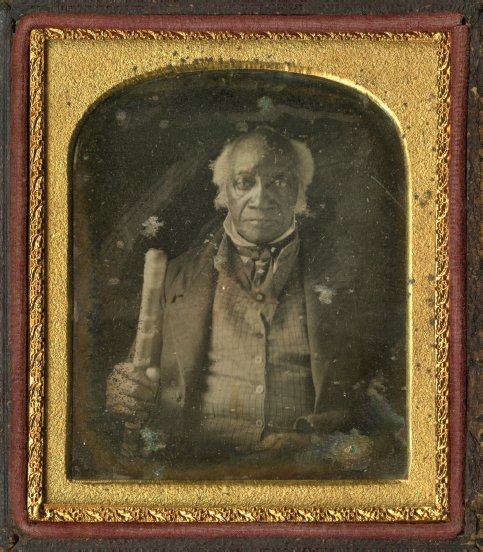
“Daguerrotype of Caesar - A Slave,” 1851.
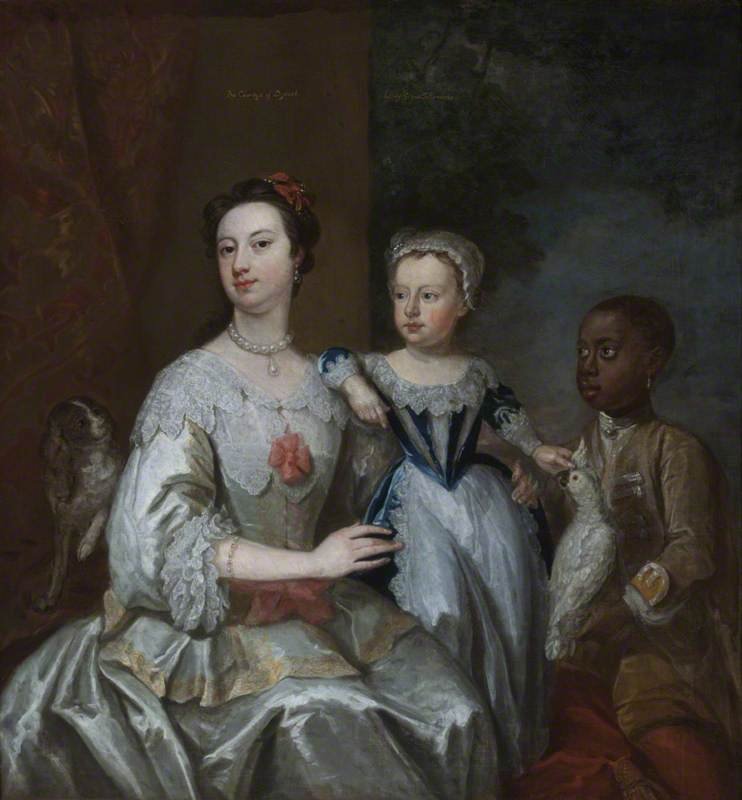
“Lady Grace Carteret, Countess of Dysart with a Child and a Black Servant, Cockatoo, and Spaniel,” John Giles Eccardt, 1779.
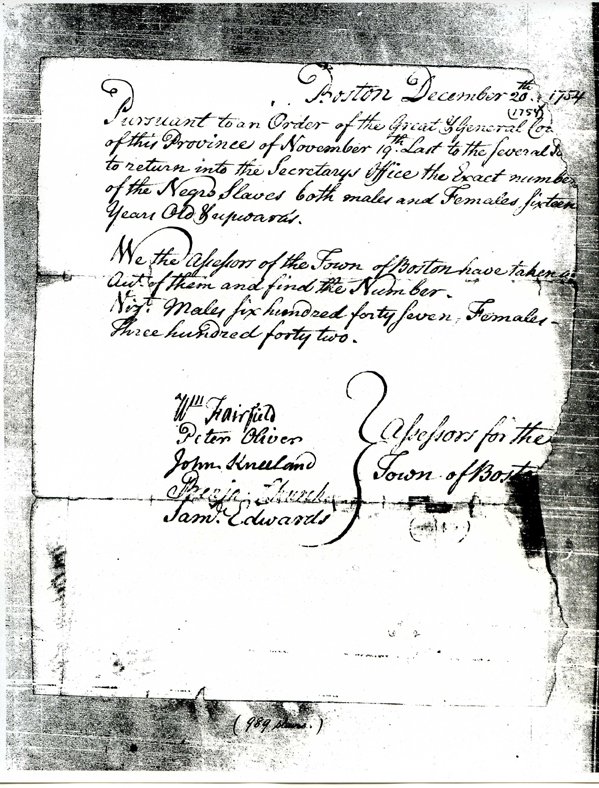
Letter reporting the results of the 1754 Slave Census in Massachusetts to Royal Governor Shirley. This letter counts “Negro Slaves” in the town of Boston over the age of sixteen. It claims there were 647 men and 342 women, and it is unclear whether this claim was accurate. Image courtesy PrimaryResearch.org.

City Gazette and Daily Advertiser, Charleston, August 1, 1791.

The Kitchen Maid, Jean Siméon Chardin, 1738. Image courtesy the National Gallery of Art.
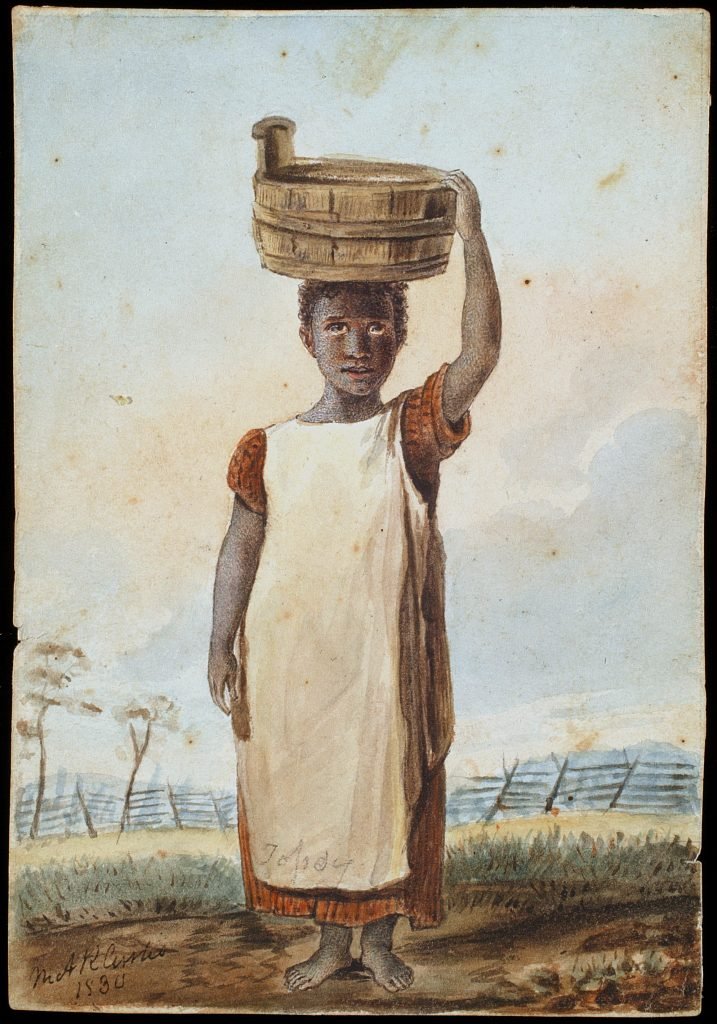
Enslaved Girl, Mary Randolph Custis Lee, 1830. Image courtesy the Colonial Williamsburg Foundation.

Benjamin Eustis’ Account Book, Dr. Benjamin Eustis, 1750. Image courtesy the author.

“Sketch of African-American Women Washing Clothes,” Unknown Artist, 1864. Image courtesy Biblioteca Ambrosiana.

Mortar and Pestle, c. 19th century. The Shirley-Eustis House Association Collections, 2014WAT.161a-b. Image courtesy the author.

Wooden laundry basin, c. 19th century. The Shirley-Eustis House Association Collections, 2014WAT.092a. Image courtesy the author.
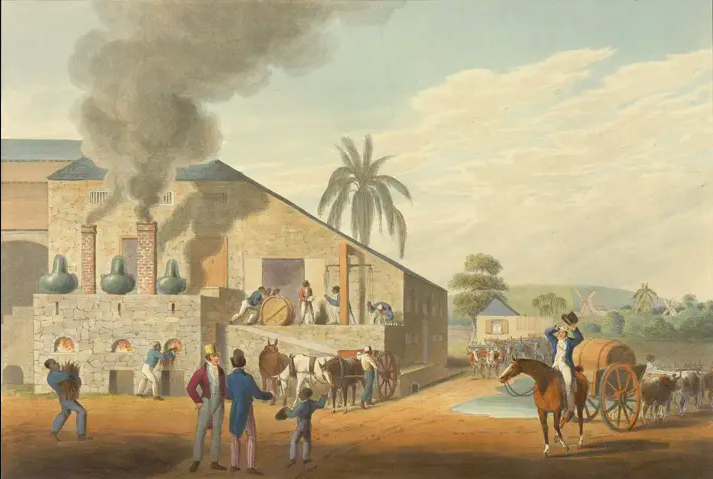
Exterior of the Curing House and Stills, Antigua, William Clark (c.1823). Photo courtesy The British Library.
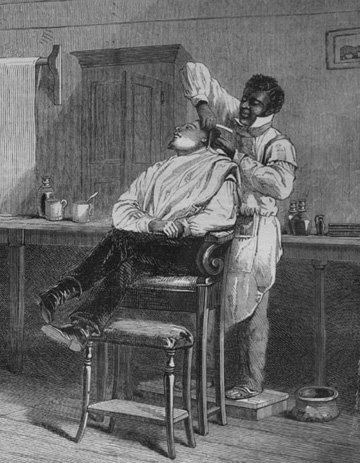
“A Barber’s Shop at Richmond, VA,” Eyre Crowe, The Illustrated London News, March 9, 1861. Detail. Image courtesy Wellcome Images.
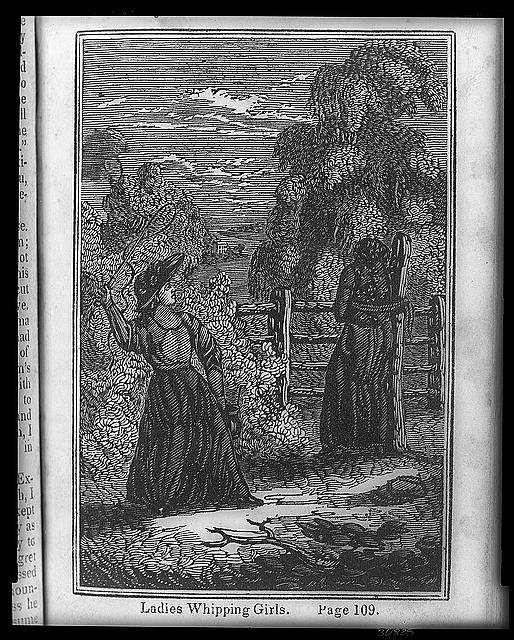
“Ladies Whipping Girls.” Illustration in George Bourne’s Pictures of Slavery in the United States of America (Middletown, CT: E. Hunt, 1834), p. 109.
images from “Slavery at the Shirley-Eustis House”
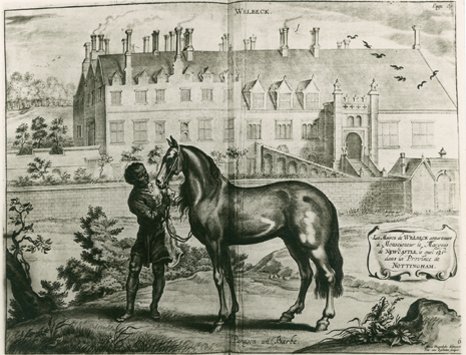
Illustration titled “Paragon un Barbe,” or Barbe Paragon, a type of horse popular in seventeenth century England. This one belonged to the Duke of Newcastle, whose descendants would eventually help William Shirley secure the position of Royal Governor. Here the horse is pictured with an enslaved man. Image via Yale University Libraries.
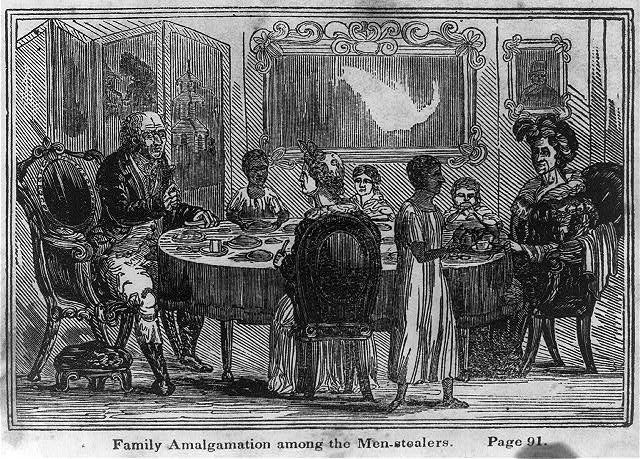
“Family Amalgamation Among the Men-Stealers,” Unknown author, 1834. Originally published in George Bourne, Picture of Slavery in the United States of America (Middletown, CT: E. Hunt). Image courtesy the Library of Congress.
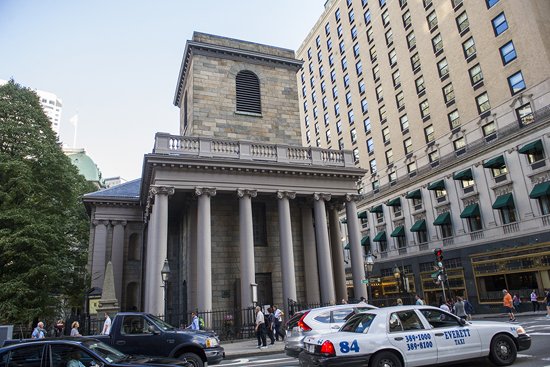
King’s Chapel, where several of the people William Shirley enslaved were baptized. Photo courtesy Jackie Ricciardi of Boston University.

A clip from Elizabeth Shirley Hutchinson’s 1766 inventory of her belongings. Note that among her personal items are listed two enslaved people, Ceasar and Hannah, as well as their clothing and bedding. This does not tell us much about Ceasar and Hannah, but it informs us that they lived and worked as part of the Shirley and Hutchinson families.

Runaway slave advertisement placed in the Boston News-Letter on February 17, 1732. Image courtesy Aabid Allibhai’s “Working Report on Slavey at Shirley Place.”

The Shirley-Eustis House in Roxbury, MA. Photo courtesy the Shirley-Eustis House Association.
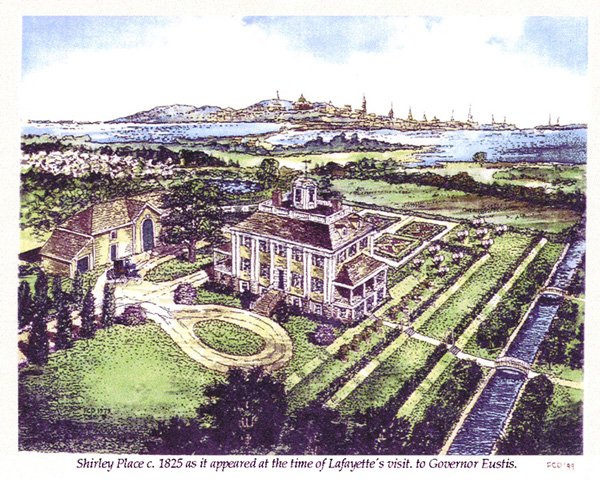
1820 image of the “Eustis Mansion,” now the Shirley-Eustis House Association. Image courtesy the Shirley-Eustis House Association.
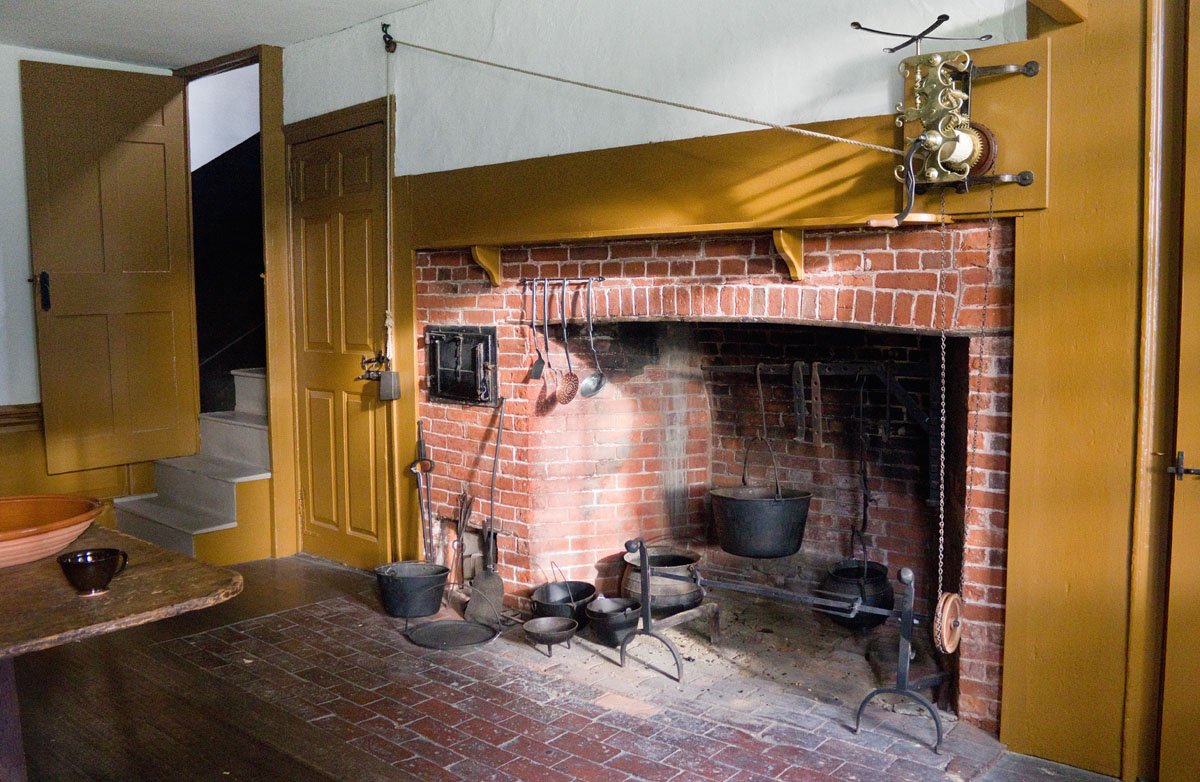
The restored “winter kitchen” at the Royall House and Slave Quarters in Somerville, Massachusetts. This kitchen was originally constructed, along with the house, in 1690, but was renovated after Isaac Royall, Sr. purchased the land on which it was situated in 1737. Photo courtesy the Royall House and Slave Quarters.

Several kitchen and household tools found in the Shirley-Eustis House’s collections. From left to right: toasting fork, bread peel, butter paddle, wooden ladle, and laundry spoon. Photo taken by the author.
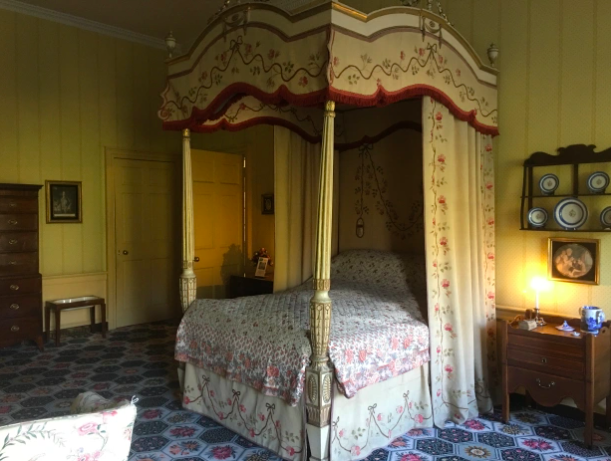
This fully furnished reproduction of a Georgian-era bedroom is from The Georgian House in Edinburgh, Scotland. Photo courtesy Carly Brown on carlyjbrown.com.
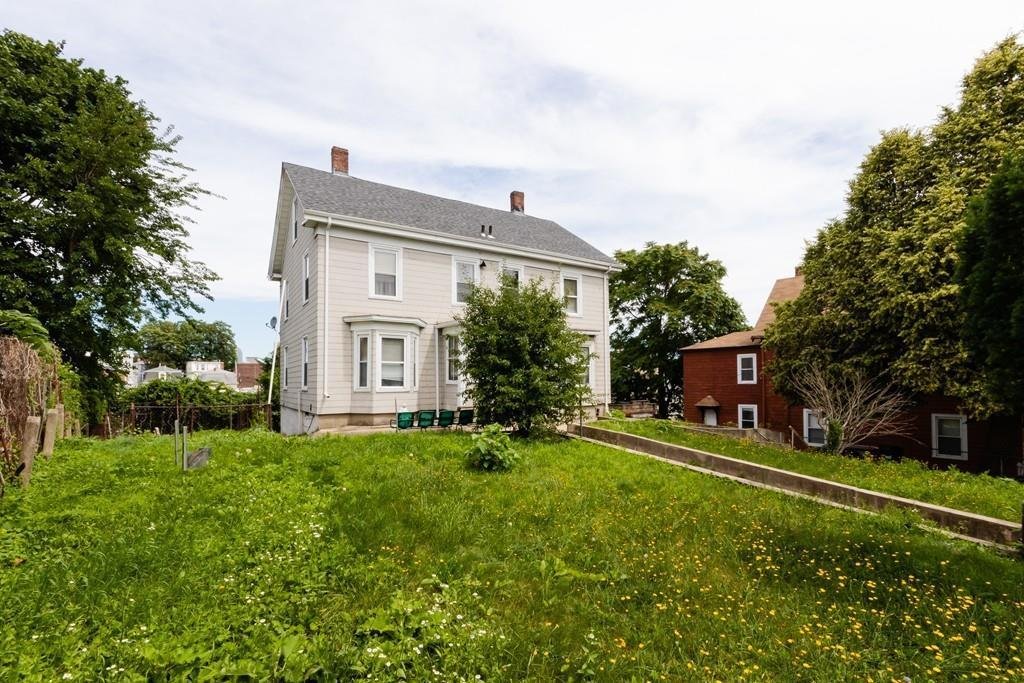
The building at 42-44 Shirley Street today. It sits across the street from the Shirley-Eustis House Mansion. Photo courtesy Redfin Realty.
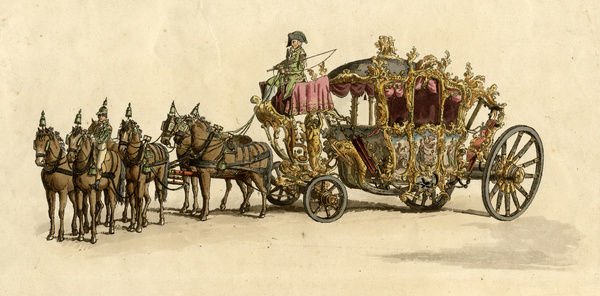
“Lord Mayor’s Show,” Unknown artist, 1805. Image courtesy the London Picture Archive.
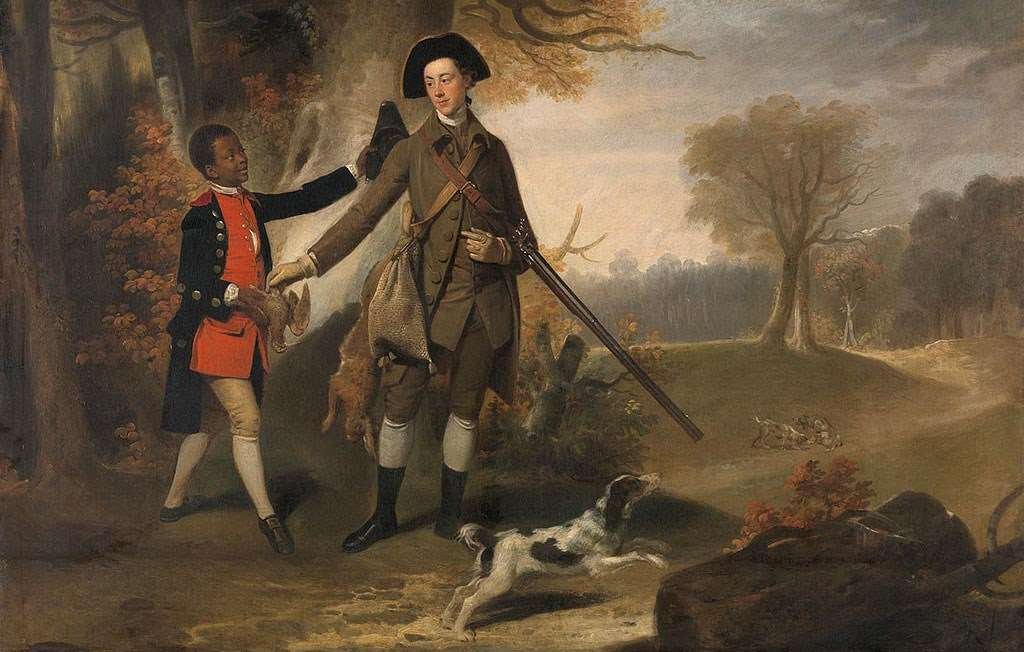
Unknown Man and Servant, unknown artist, ca. eighteenth century. Image courtesy the Center for British Art at Yale University.
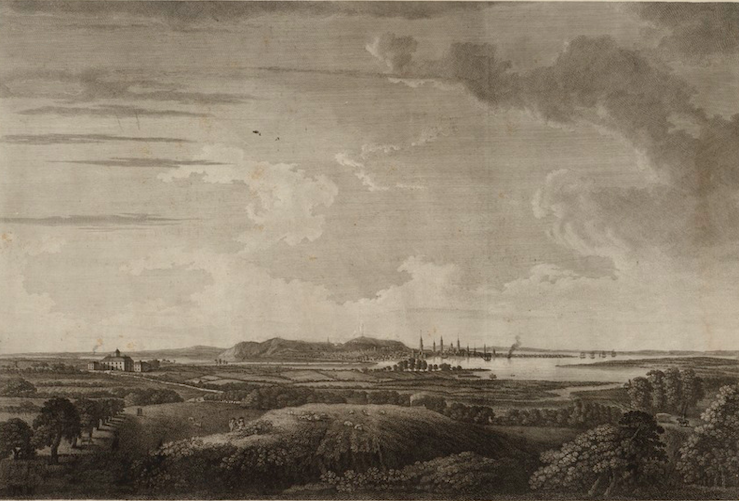
A View of Boston Taken on the Road to Dorchester, James Newton, 1776. Image courtesy the Norman B. Leventhal Map Center at the Boston Public Library.
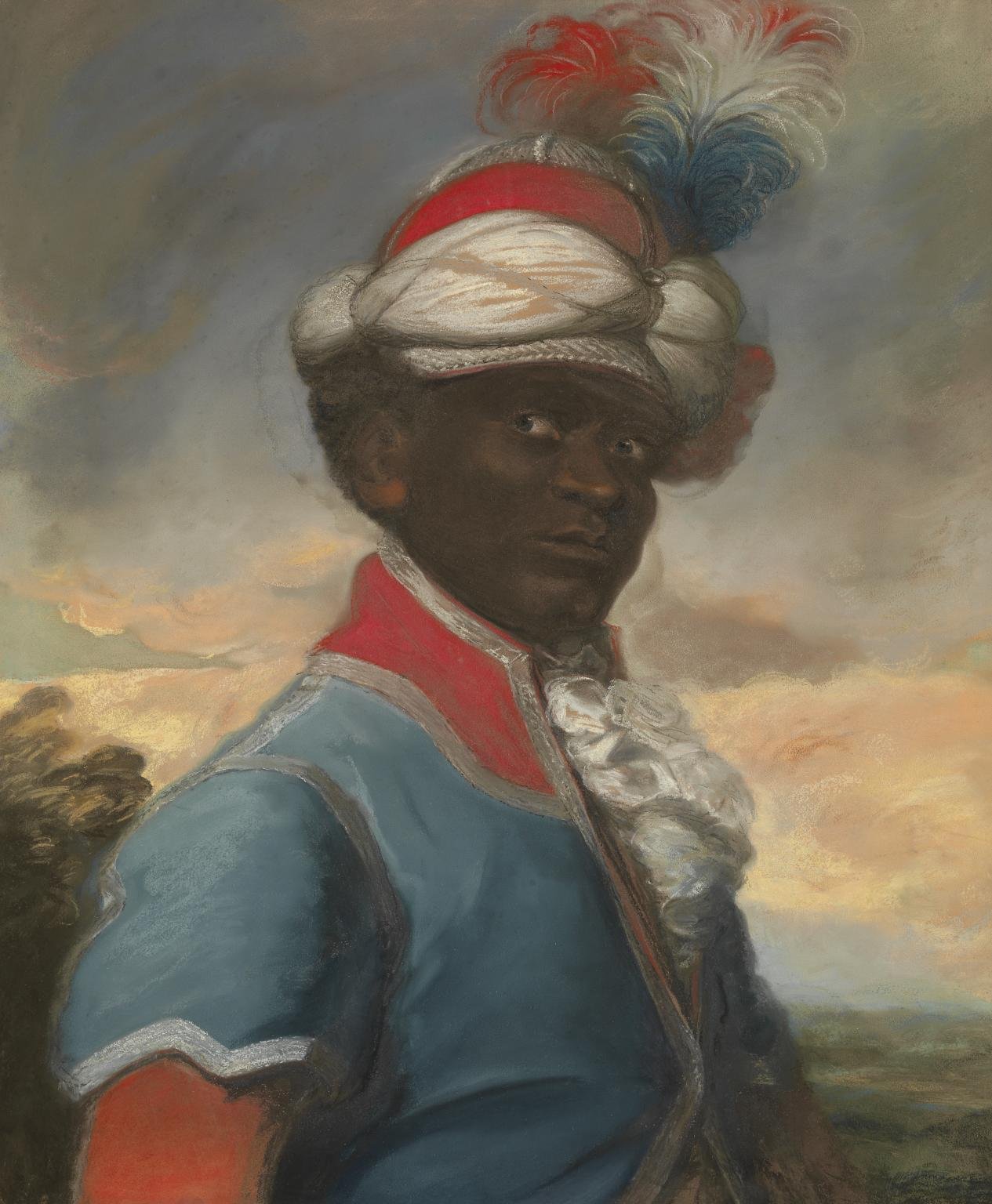
“Baron Nagell’s Running Footman,” Ozias Humphry, c.1795.
